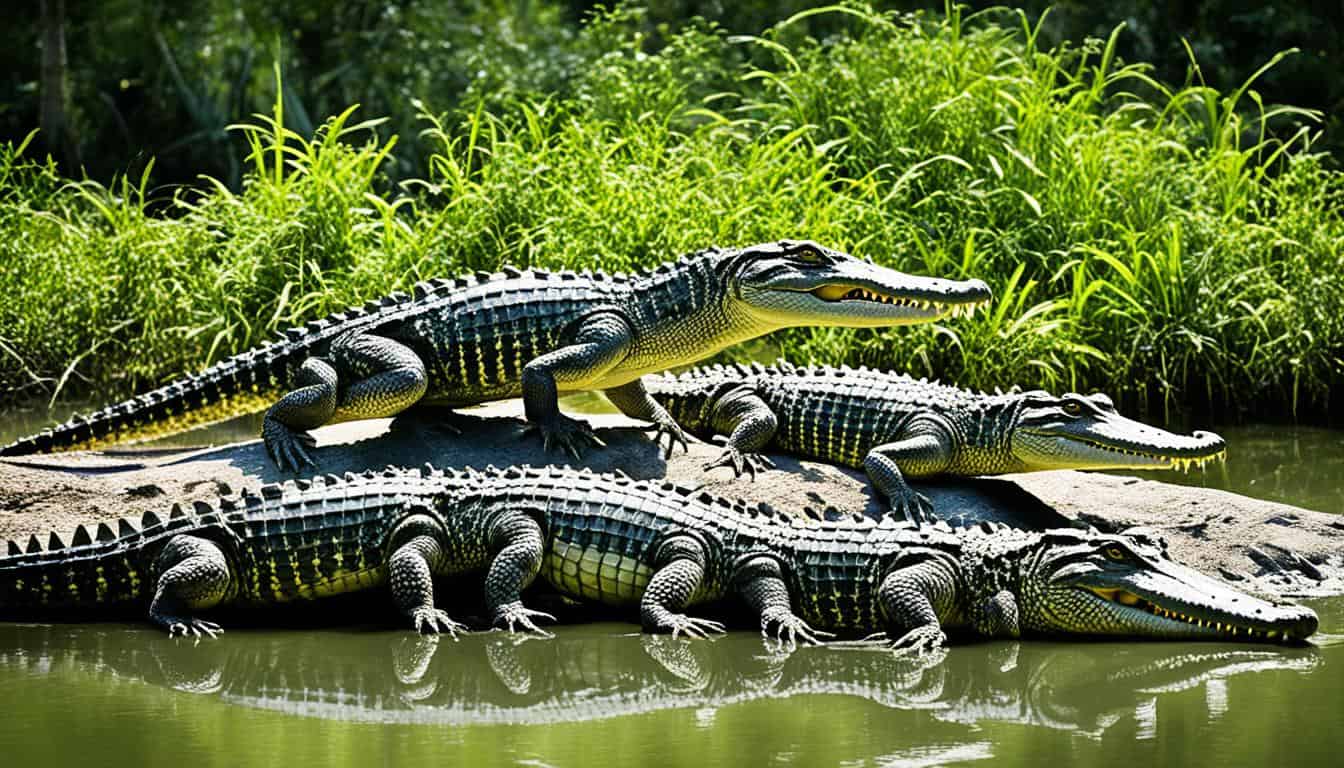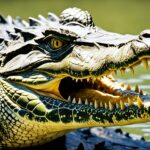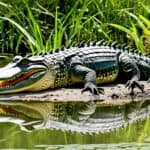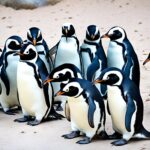Let’s embark on a journey to learn about the different crocodile species. These ancient reptiles have been around for millions of years. They show how adaptable and important they are to our ecosystems.
By looking into their diversity, we learn about their special traits, where they live, and how they behave. This knowledge helps us understand their role in nature. Join us to explore the fascinating world of crocodiles and see why we must protect them for the future.
Crocodilian Overview: Understanding the Basics
Crocodilians are fascinating reptiles crucial to our planet’s ecosystems. They are divided into different groups, with crocodiles being a key member. This overview will cover their classification and key traits.
Defining Crocodiles and Their Classification
Crocodiles are part of the order Crocodylia, with about 27 species. They are split into families like:
- Crocodylidae (true crocodiles)
- Alligatoridae (alligators and caimans)
- Gavialidae (gavials)
This crocodilian overview highlights their classification and their meat-eating nature. They have special traits for living on land and in water. Their link to birds shows their ancient origins.
Unique Physical Features of Crocodiles
Crocodiles have unique physical features that help them survive. Key traits include:
- Powerful jaws for biting
- Short legs with webbed toes for swimming
- Body design that keeps eyes, ears, and nostrils above water
- Thick skin with a special scale pattern
These traits, along with differences in snout size and head shape, help tell different crocodile classifications apart. Knowing these features is key to understanding their roles in their habitats.
The Role of Crocodiles in Ecosystems
Crocodiles are vital as top predators in their habitats. They control prey populations, keeping ecosystems balanced. Their hunting helps keep fish, birds, and other wildlife in check.
Also, crocodiles in ecosystems play a role in nutrient cycling. They create homes for many species and help maintain biodiversity in wetlands and other places.
What are the different species of crocodiles?
The world of crocodilians is full of diversity, with many types of crocodiles living in different places. Knowing about the main families and their unique traits helps us understand these amazing reptiles better.
Exploring the Major Families of Crocodilians
The main families of crocodilians include:
- Crocodylidae: This family has true crocodiles like the Nile (Crocodylus niloticus) and Saltwater (Crocodylus porosus) crocodiles. They are known for their strong bodies and jaws.
- Alligatoridae: This group includes alligators and caimans, like the American alligator (Alligator mississippiensis) and the Yacare caiman (Caiman yacare). They have wider snouts.
- Gavialidae: The gharial (Gavialis gangeticus) is the only member of this family. It has a long snout perfect for catching fish. Each family has special traits that help them live in different places.
A Look at Individual Species Characteristics
Each species of crocodile has its own traits. For example, the American crocodile (Crocodylus acutus) is lighter-skinned and lives in brackish waters. It’s very adaptable. On the other hand, the Chinese alligator (Alligator sinensis) is smaller and lives in cooler places. It has special traits for its environment.
These differences in size, what they eat, and how they reproduce show how crocodilians have found many ways to survive.
Crocodile Habitats: Where Do They Live?
Crocodiles live in places with certain conditions that help them survive. Their homes tell us a lot about how they live and adapt. They live in many wetlands and tropical areas, playing a big role in nature’s balance.
Geographic Distribution of Crocodiles
Crocodiles are mostly found in lowland tropical areas around the world. They live in Africa, India, and Southeast Asia. Alligators live in the Americas and parts of China. Their homes can change due to the environment and people.
Preferred Habitats: Freshwater vs. Saltwater Environments
Crocodiles like different places to live. Saltwater crocodiles love brackish and saltwater, like estuaries. American alligators prefer freshwater, like lakes and rivers. These choices affect their behavior and how they live with other animals.
Impact of Habitat Loss on Crocodilian Species
Habitat loss is a big problem for crocodiles. Things like cities, farms, and pollution shrink their homes. This hurts not just the crocodiles but also other animals in their homes. We need to act fast to save these animals from disappearing.
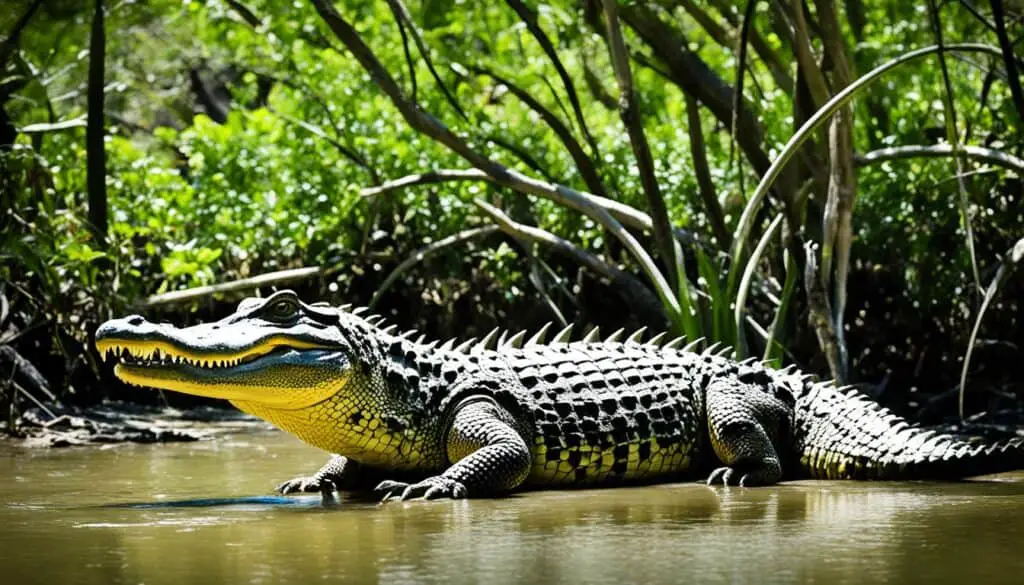
Crocodile Behavior and Adaptations
Crocodiles have fascinating behaviors that help them survive. These behaviors make us appreciate these ancient reptiles more. They include how they eat, reproduce, and adapt to different environments.
Feeding Habits: What Do Crocodiles Eat?
Crocodiles are meat-eaters and eat a variety of things based on where they live. They mainly eat fish, birds, and small mammals. They hunt using stealth and ambush tactics to catch their prey efficiently. This shows how they are top predators in their habitats.
Reproductive Strategies: Nesting and Hatchling Care
Most crocodiles breed every year, and the female builds a nest on riverbanks. The nest size and number of eggs vary by species. Some moms take care of their babies after they hatch, while others don’t. These different ways of taking care of their young show how crocodiles adapt to survive.
Adaptations for Survival in Varied Environments
Crocodiles have amazing adaptations that let them live in different water environments. They can stay underwater for a long time, which helps them hunt. They also control their body temperature by basking in the sun or cooling off in water. These adaptations are key to their survival in various places.
| Behavior/Adaptation | Description | Significance |
|---|---|---|
| Feeding Habits | Carnivorous diet including fish, birds, and mammals | Maintains predator-prey balance in ecosystems |
| Nesting Strategies | Construction of nests on riverbanks | Ensures safety and proper incubation of eggs |
| Parental Care | Varied involvement with hatchlings | Improves hatchling survival rates |
| Respiratory System | Adaptations for extended submersion | Enhances hunting efficiency |
| Thermoregulation | Basking and retreating to cool water | Maintains optimal body temperature for activity |
Crocodilian Conservation: Protecting Endangered Species
Crocodilian conservation is vital as many species face threats from habitat loss, poaching, and climate change. Species like the Chinese alligator, Cuban crocodile, and Philippine crocodile need our help. Without strong conservation efforts, they could disappear, harming their ecosystems.
Protecting crocodiles means using many strategies, like sustainable harvesting and saving their homes. Working with local communities helps a lot. They learn why it’s important to protect their crocodiles, which helps everyone involved.
To help crocodilians, we need strong global policies, especially on the exotic leather trade. Supporting eco-tourism can also help by making it profitable to keep their homes safe. By valuing crocodiles, we help protect these ancient reptiles and the ecosystems they live in.
FAQ
What are the different species of crocodiles?
There are about 27 species of crocodiles. They belong to families like Crocodylidae, Alligatoridae, and Gavialidae. Some well-known ones are the Nile crocodile, saltwater crocodile, American alligator, and gharial.
How can I identify different crocodile species?
You can tell them apart by looking at their snouts, skin colors, and where they live. For example, the American crocodile has light skin, unlike the Nile crocodile’s darker skin.
What role do crocodiles play in their ecosystems?
Crocodiles are top predators. They keep prey populations in check and help balance their environments. They also play a part in nutrient cycling in wetlands.
What are the preferred habitats for crocodiles?
Different crocodile species like different places to live. Saltwater crocodiles like brackish and saltwater areas. American alligators prefer freshwater lakes and rivers.
How do crocodilian species adapt to their environments?
Crocodilians have special features like breathing systems that let them stay underwater a long time. They also bask in the sun to regulate their body temperature.
Why are some crocodilian species endangered?
Many crocodilian species are in danger because of habitat loss from things like cities, farms, pollution, and hunting. The Chinese alligator and Cuban crocodile are almost gone and need help to survive.
What do crocodiles eat?
Crocodiles eat fish, birds, and mammals. They hunt in different ways, like ambushing or scavenging, based on what’s available in their area.
How do crocodiles reproduce and care for their young?
Female crocodiles lay eggs on riverbanks. They take care of their babies in different ways. Some protect their hatchlings, while others leave them after laying eggs.
What conservation efforts are being made to protect crocodilian species?
Conservation efforts include protecting their homes, using resources wisely, and teaching local communities. It’s also important to have laws against the exotic leather trade to help these species.

